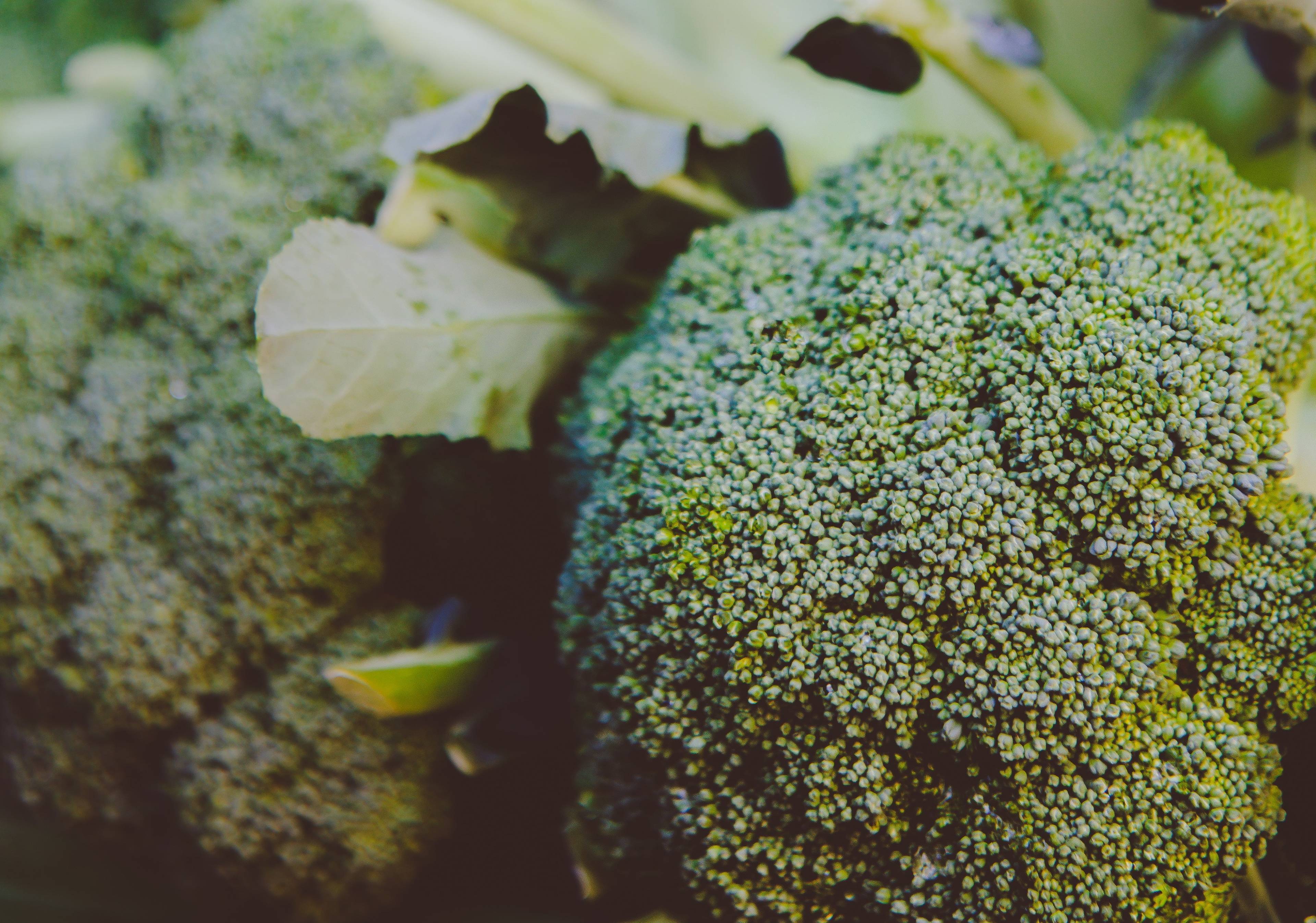
What we eat has a profound impact on our health and well-being. What we eat or do not eat either supports or challenges our health. The foods we consume play a vital role in providing the nutrients our bodies need to function optimally.
A diet rich in nutrient-dense foods such as seeds, lean protein, fruits, and vegetables can significantly contribute to our overall health. In contrast, a diet that is high in sugar, salt, and processed food or ingredients is detrimental to our health, negatively impacting how we think and feel and robbing us of our vitality.
Keep reading for fiber-forward favorites to include in your diet this year -- plus learn about four foods you should add to your diet and four foods you should eliminate immediately.
Add more fiber-rich foods
Fiber is essential to a healthy diet, providing many benefits beyond just keeping you regular. It also helps protect against potential health challenges and supports weight management and overall gastrointestinal health. Here is a quick overview of how fiber supports your body.
Digestive health
Improves digestive health by preventing constipation and reducing the risk of digestive problems. Fiber supports healthy digestion and bowel movements. It adds bulk to stool, helping waste pass through the body. Diets high in fiber can help prevent constipation, reduce the risk of diverticulitis (intestinal inflammation), and may even support irritable bowel syndrome (IBS).
Blood sugar
Helps control blood sugar levels which may lower risk of diabetes. Fiber limits inflammation linked to diabetes and heart disease. A study in the American Journal of Clinical Nutrition found fiber protects against C-reactive protein (CRP). High CRP levels indicate inflammation that can lead to diabetes and cardiovascular disease. Fiber may help lower diabetes risk by limiting this inflammatory marker.
Proactive Prevention
A diet high in fiber may lower the chances of developing colorectal, breast, and other cancers. Fiber removes toxins and balances estrogen levels. Some research links high-fiber diets with reduced colorectal cancer risk, though more evidence is needed. Fiber also appears to lower circulating estrogen, which may lower breast cancer risk. By removing toxins, fiber protects against cancers.
Skin health
Fiber cleanses the blood of toxins, allowing them to be eliminated through digestion rather than the skin. High-fiber foods also provide antioxidants that protect skin from free radical damage to DNA.
Heart health
Fiber promotes heart health by improving cholesterol and lowering blood pressure. Experts say fiber improves cholesterol levels and reduces inflammation. This decreases the risk of heart disease and lowers blood pressure. The heart benefits of fiber relate to its impacts on inflammation and cholesterol.
Metabolic health
Fiber can support weight management through increasing satiety and fullness. The bulking properties of fiber promote feelings of fullness. This allows one to feel satisfied eating fewer calories, supporting healthy weight loss. Fiber creates a calorie deficit without hunger pangs.
What is Fiber?
Fiber is a type of carbohydrate that the body cannot digest. It is found naturally in plant foods like fruits, vegetables, grains, and legumes.
There are two main types of fiber:
Soluble fiber dissolves in water to form a gel-like substance. This slows digestion, promotes fullness, and helps regulate blood sugar. Sources include chia seeds, oats, and beans.
Insoluble fiber does not dissolve in water. It adds bulk to stool and helps food pass through the digestive tract. Whole wheat flour and vegetables contain insoluble fiber.
Fermentable fiber can originate from either soluble or insoluble sources, though more often the former. Fermentable fiber nurtures beneficial bacteria in the colon when broken down. Onions, garlic, bananas, and asparagus supply fermentable fiber.
Fiber also helps sustain energy levels. Soluble fiber forms a gel-like consistency that slows down digestion, preventing spikes and crashes in blood sugar. The sustained energy from fiber-rich foods can improve concentration and mood and can even support physicality for daily activities. Insoluble fiber adds bulk to stool and aids regularity. Consuming adequate fiber consistently and daily maintains GI health and provides a steady stream of high-quality energy.
When our gut bacteria break down fiber, they produce short-chain fatty acids (SCFAs). Humans can digest SCFAs for energy, creating a symbiotic relationship between the digestive system and the gut microbiome. For every gram of fiber consumed, two calories of energy are gained in the form of SCFAs.
Despite its benefits, most Americans fall short on daily fiber intake, getting only 10-15 grams compared to the USDA's recommendation. The recommended daily amount for adults up to age 50 is 25 grams for women and 38 grams for men. Women and men older than 50 should have 21 and 30 daily grams, respectively.
The good news is that meeting your fiber needs is readily achievable. You can easily supplement to support your fiber fix and integrate tons of high-fiber foods into your diet. Start by focusing on plant foods like fruits, vegetables, lentils, grains, and legumes.
While 5 grams per serving is considered high fiber, foods with less still contribute valuable amounts when regularly consumed. Aim for variety; it ensures adequate fiber and a range of nutrients. Keep reading to learn more about fiber-forward foods that taste great and can be enjoyed for any meal or snack.
Seaweed (19g per cup)
Avocados (9g per medium avocado)
Raspberries (8g per cup)
Artichokes (7g per medium, uncooked)
Chickpeas (24.5g per cup)
Split Peas (21.5g per 1⁄2 cup, uncooked)
Plus, here are 24 more top high-fiber foods to blend into your nutrition regimen in the new year, from highest to lowest fiber per serving:
Black Beans (16.5g per cup)
Lentils (15.5g per cup, cooked)
Pinto Beans (15g per cup)
Bran (14.5g per cup)
Peanuts (14g per cup)
Prunes (12g per cup)
Sunflower Seeds (12g per cup)
Soybeans/Edamame (11g per cup)
Lima Beans (11.5g per cup)
Flax Seeds (11.5g per 1⁄4 cup)
Oatmeal (10g per ounce)
Whole-grain spelled (7.5g per cup)
Blackberries (7.5g per cup)
Guava (9g per cup)
Quinoa (5g per cup, cooked)
Pears (5.5g per medium pear)
Apples (5g per medium apple)
Cauliflower (5g per head)
Collard Greens (6g per cup)
Barley (6g per cup, cooked)
Coconut (5g per cup)
Acorn Squash (9g per cup)
Bananas (3g per medium banana)
Broccoli (2.5g per cup)
Incorporating these high-fiber foods into meals and snacks can help meet daily fiber needs for good health. However, take your time to build up your fiber intake. Gradually increasing high-fiber foods over weeks allows the body to adjust and prevents gas and bloating. Drinking plenty of water also helps move fiber through the system.
Avoid foods that do not support your health
In the meantime, start eliminating foods that don’t add value to your health or well-being. There are many foods, ingredients, and chemicals to consider and avoid if you truly wish to improve how you feel today and how your body ages for tomorrow.
These four categories are the worst offenders. Start here:
Sugary drinks
Sugar-sweetened beverages provide empty calories and excess sugar with no nutritional benefit. It's best to avoid them and instead focus on high-fiber plant foods and healthy hydration sources like water.
Salty snacks
Salty snacks like potato chips and cheese doodles contain high amounts of sodium and chemical preservatives. Limiting processed snack foods helps reduce sodium intake and avoid unwanted additives.
Refined sugary desserts
Packaged sweets like candy and cookies deliver empty calories, added sugars, oils, and preservatives. Replacing these with fresh fruits and other unprocessed treats eliminates low-nutrient foods.
Processed meats
Processed meats, including bacon, sausage, and cold cuts, are linked to increased cancer and heart disease risk. Choosing leaner, unprocessed protein sources is healthier for the heart and overall well-being.
Add foods that nourish your health
In addition to fiber, there are other simple lifestyle and dietary changes that can profoundly impact your health. Herbal teas provide antioxidants, reduce inflammation, and can help manage stress. For example, adding more water, fermented foods, lean protein, and herbal teas to your diet is an easy way to improve overall well-being this year.
The combination of these four nourishing foods and beverages with adequate fiber lays the foundation for vitality. Here’s why
Water
Hydrating well with water is vital for your health. Consuming adequate water supports every bodily system and function. Getting enough fluids ensures digestion, metabolism, temperature regulation, and waste removal run optimally.
Fermented foods
Adding probiotic-rich fermented foods like yogurt, kefir, sauerkraut, kimchi, and kombucha to your diet provides beneficial bacteria for the gut. These live microorganisms aid digestion, nutrient absorption, immunity, and overall well-being.
Lean protein
Lean protein sources like poultry, fish, eggs, legumes, nuts, and low-fat dairy provide essential amino acids for building muscle, burning fat, and controlling hunger. Protein keeps you feeling fuller longer, supporting body composition, metabolism, and more.
Herbal teas
Herbal teas deliver antioxidants that fight stress in the body and mind, which is linked to a host of health issues. Various teas can also aid sleep, digestion, immunity, mental clarity, stress management, and more. Sipping herbal teas benefits health in numerous ways.
The benefits of a high-quality, diverse diet, rich in nutrients and packed with healthy fiber, are well-documented and significant. By eliminating toxic non-nutritious foods and incorporating a variety of fiber-rich foods into your daily meals, you can not only manage your weight more effectively and increase your sustainable energy but also promote overall health and well-being by supporting healthy digestion and minimizing the risk of chronic diseases.
At times choosing to be healthy can feel like a revolutionary act, and for good reason. Proactively choosing what to eat or not to eat every day will profoundly transform how you feel. Making informed food choices and prioritizing nutritional intake is key to nourishing and sustaining both body and mind.



